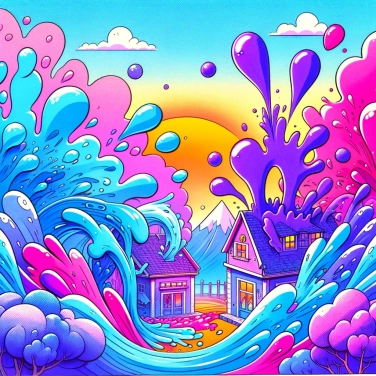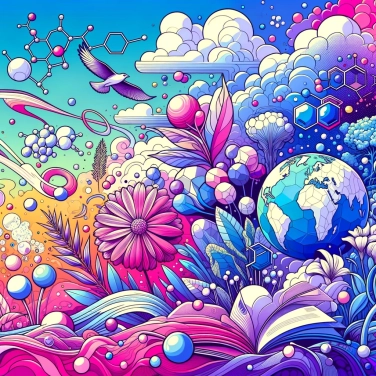The paper is made up of fibers that are hydrophobic, meaning they repel water. On the other hand, the ink contains wetting agents that allow the pigments to adhere to the paper by penetrating between the fibers.

Paper is primarily made of plant fibers derived from cellulose, a very porous natural polymer that forms a network of tiny spaces and interwoven channels. Imagine a kind of microscopic spider web made of randomly interlaced fibers. These fibers, due to their rough and porous texture, have a large surface area that allows certain liquids to penetrate and adhere quickly. Depending on the density and nature of the paper, these spaces will vary in size: the smaller they are, the more easily the phenomenon known as capillarity will manifest. It is precisely these tiny holes and microscopic channels that will吸引 and retain ink, while pure water will tend to simply remain on the surface or be temporarily absorbed without adhering permanently.
Water is made up of very simple molecules: two atoms of hydrogen and one atom of oxygen, resulting in a polar liquid capable of forming bonds between its molecules (hydrogen bonds). This is convenient, but it makes water relatively uninterested in the fibers of paper, which also like water but without any more sophisticated chemical affinity.
In contrast, ink is a more complex mixture, generally composed of water, pigments or dyes, thickeners, and various chemical substances that facilitate its absorption by paper. These additional ingredients modify the chemical interactions: instead of just "passing through", they tend to create stronger interactions (chemical and molecular bonds) with the cellulose fibers of the paper.
The result? The paper prefers to keep the ink close to it rather than pure water, which often ends up evaporating without deeply penetrating the fibers.
Water has a high surface tension, imagine an invisible skin on its surface: this limits its immediate penetration into the fibers of the paper. Ink, on the other hand, contains specific additives (such as surfactants) that reduce this surface tension. The result? It easily and quickly penetrates into the tiny channels of the paper thanks to capillarity. Capillarity is the ability of a liquid to climb by itself into small narrow spaces, like water rising in a dry sponge. The pores of the paper do the same with the ink: they吸it deeply inside because it "wets" the surface better. Pure water, without specific additives, tends to accumulate on the surface without penetrating effectively, just sitting there on the sheet, without really making the journey inside.
When you deposit liquid on paper, the molecules of the paper interact with those of the liquid in a very specific way. Paper contains many cellulose fibers, and these fibers love to attract certain molecules, like those of ink. Why? Because ink molecules often contain chemical substances capable of forming strong chemical bonds with the molecules of the paper. As a result, they literally cling to the fibers of the paper. But with water, it’s a different story. Even though paper can吸 water through capillarity, water molecules do not cling as firmly as ink because their interactions with the fibers are much weaker and more superficial. Thus, water generally ends up evaporating, leaving the paper dry, whereas ink remains securely attached to the fibers.
Yes, over time, the fibers of the paper can deteriorate or become more brittle, affecting its absorbency. Humidity and the environment can also alter the microscopic structure of the paper, thus changing its behavior with liquids such as water or ink.
No, the chemical compounds in the ink penetrate deeply into the fibers of the paper and remain fixed there, unlike pure water, which can evaporate quickly without leaving any significant residue.
Sure! Here’s the translation: "Yes, thanks to specific treatments applied to the surface of the paper. These treatments help reduce water penetration while preserving certain specific chemical reactions to ensure ink adhesion."
A wet paper has its fibers saturated with water, significantly reducing the capillary action needed to effectively absorb ink. This saturation weakens the chemical interaction between the paper and the ink.
Use paper with a higher density or grammage. Thicker papers generally have a more compact fiber structure, which limits the deep penetration of ink.
The absorption capacity depends on the microscopic and chemical structure of the paper. More porous and chemically treated fibers promote the rapid and efficient absorption of ink.

No one has answered this quiz yet, be the first!' :-)
Question 1/5